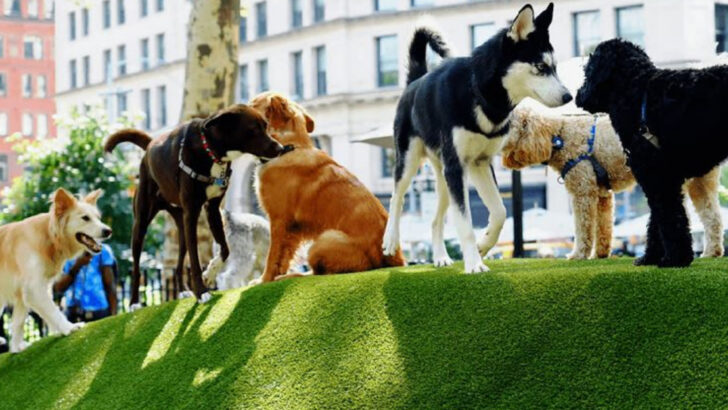Dog parks look like paradise—until someone breaks the unspoken code.
You know the one: no leash chaos, no snack ambushes, no letting your pup play “too rough.”
But every day, well-meaning owners stroll in, smiling, clueless that they’re stirring up trouble.
From hogging the gate to ignoring poop protocol, the mistakes are small but mighty.
And yes—dogs notice. So do the other humans.
Some rules aren’t on the sign, but they matter just as much.
They’re the difference between a joyful romp and a growl-filled disaster.
Because it’s not just about your dog—it’s about every tail-wagger on the field.
If you’ve ever set foot inside a dog park, chances are… you’ve broken at least one of these rules.
No shame—just read on, and let’s make the park peaceful again.
Not Cleaning Up After Your Dog
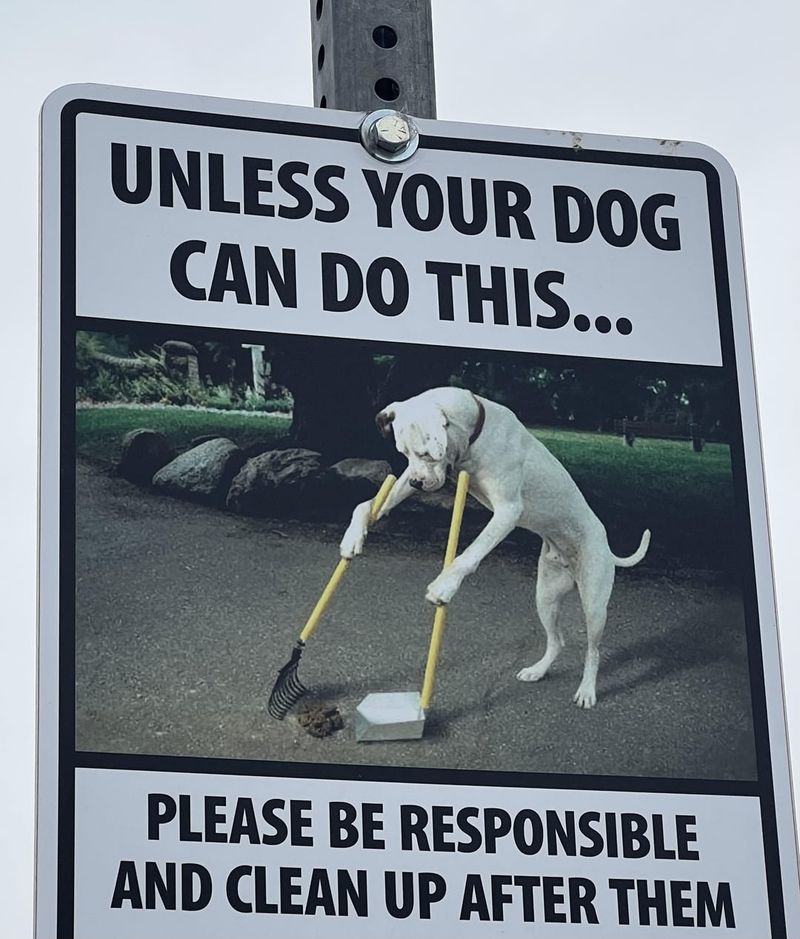
Picture this: a sunlit morning at the park, when suddenly, an unpleasant sight disrupts the serenity – an owner neglecting to scoop their dog’s poop. It’s a courtesy often forgotten, leaving a mess for others. Besides being unhygienic, it can lead to health issues for other dogs. Consider the frustration of stepping in an unexpected pile during playtime. Ensure you carry bags, and if you forget, don’t hesitate to ask another owner. Creating a clean environment fosters community trust and healthy interactions. No one wants to play near a neglected mess, right?
Bringing Aggressive Dogs
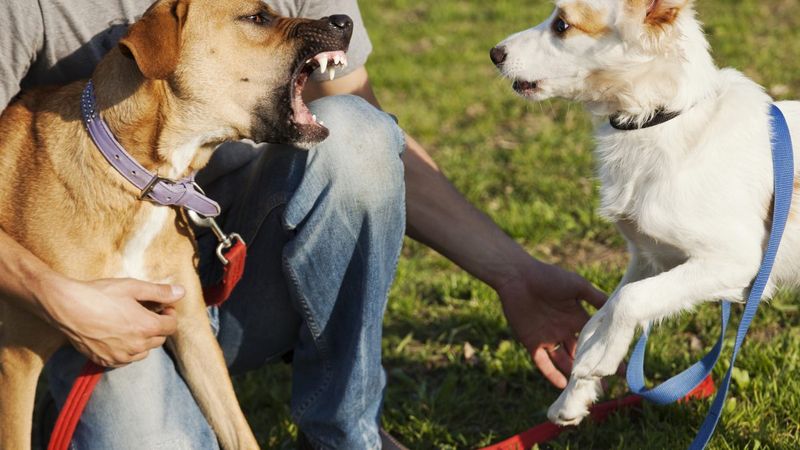
A peaceful park can quickly turn chaotic when an aggressive dog enters the scene. Recognizing your dog’s temperament is crucial before visiting. Bringing a dog prone to aggression can lead to conflicts, causing stress for all involved. It’s vital to understand your pet’s triggers. Some dogs may not be socialized or have past trauma. If your dog shows signs of aggression, consider professional training. A safe park is a happy park, where everyone can enjoy peace and play without fear. Remember, safety starts with awareness.
Ignoring Leash Rules

Leash rules are not just suggestions; they’re essential for safety. Each park has its regulations, and ignoring them can lead to chaos. Dogs off-leash might chase or intimidate others, causing unwanted confrontations. An unleashed dog might not respond to commands, putting themselves and others at risk. Respecting leash rules ensures a harmonious environment for all. It allows owners and pets to interact without unexpected disruptions. Always check park regulations before letting your dog roam free. A well-managed park means a safer experience for everyone involved.
Bringing Young Puppies
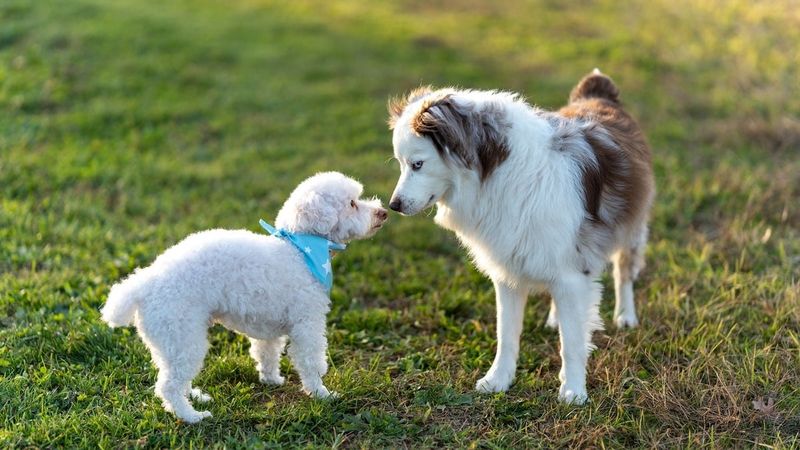
Young puppies, full of energy, may seem eager for dog park adventures, yet their vulnerability can lead to trouble. Puppies under 16 weeks might not have completed vaccinations, putting them at risk for diseases. Their playful antics can also annoy older dogs, unintentionally causing tension. Ensure your puppy is socialized and vaccinated before park visits. Gradual introductions to other dogs help them learn park manners. Start with quieter times for their first outings. This approach fosters confidence and safety, letting your puppy grow into a social, happy companion.
Ignoring Play Styles
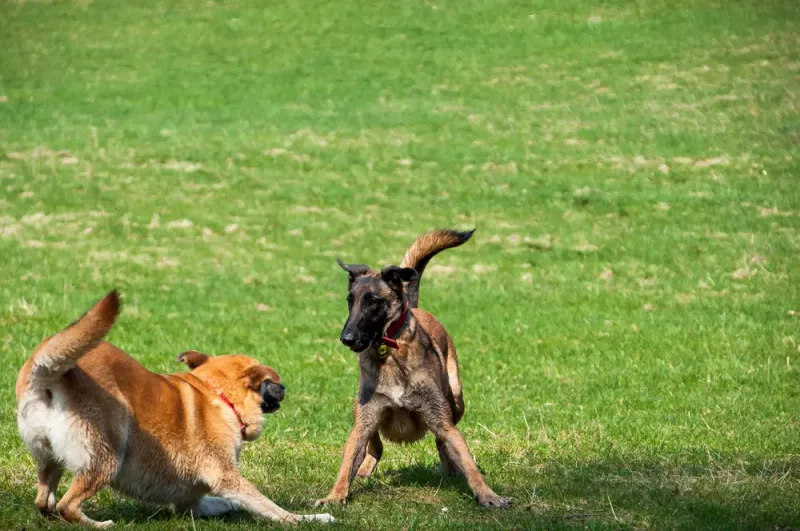
Not all dogs play the same way. Some enjoy roughhousing, others prefer gentle games. Ignoring these differences can lead to misunderstandings. Observing your dog’s play style and matching them with compatible partners prevents stress and conflicts. It’s vital to intervene if a game becomes too intense. Dogs communicate through body language; understanding these cues helps maintain harmony. Encouraging respectful interaction builds a positive environment. Always monitor playtimes, ensuring each dog feels comfortable and enjoys their park experience. Acknowledging and respecting play styles is key in dog park etiquette.
Bringing Females in Heat
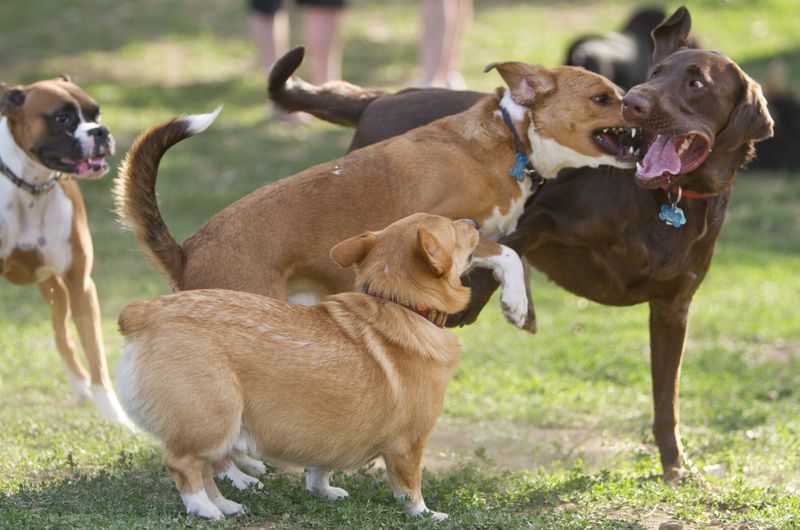
Bringing a female dog in heat to a park can stir quite the frenzy. Male dogs, driven by instinct, may relentlessly pursue her, creating stress and potential skirmishes. It’s considerate to avoid park visits during such times. Instead, opt for quieter walks away from curious canines. Ensuring your female dog is spayed can also prevent such scenarios. An unexpected chase can disrupt the park’s peace. Keeping her safe from unwanted attention ensures a harmonious environment for all. It’s a simple yet often overlooked rule of courtesy.
Neglecting to Supervise

A distracted owner can lead to unexpected dog park chaos. Supervising your pet is crucial, as dogs can quickly get into trouble without guidance. Whether it’s a budding quarrel or an escape attempt, being attentive prevents mishaps. Your presence reassures your dog, showing them that you’re in control. It also helps in recognizing signs of stress or discomfort. An unsupervised dog might inadvertently cause or encounter problems. Being actively engaged in your dog’s playtime enhances their safety and enjoyment. Remember, your dog relies on you for direction and support.
Bringing Unvaccinated Dogs
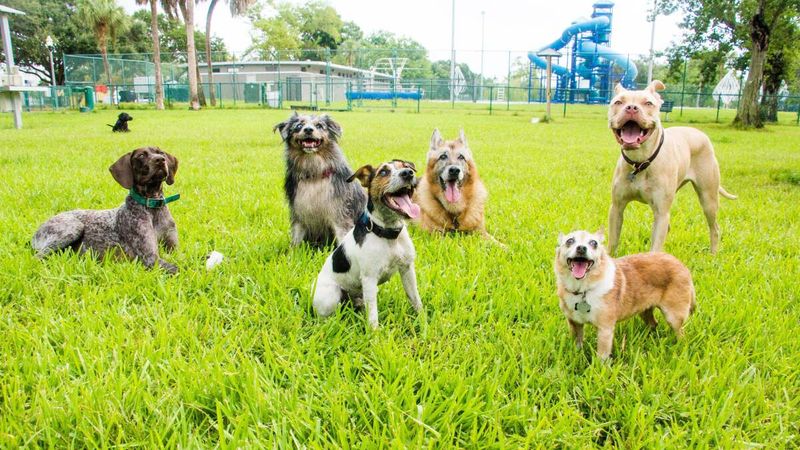
Bringing unvaccinated dogs to a park poses health risks for all. Vaccinations are crucial in preventing the spread of diseases like parvo or rabies. Parks are communal spaces; ensuring your dog is up-to-date protects everyone. Consider the potential outbreak from a single unvaccinated pet. It’s a simple precaution that ensures a healthy park environment. Before visiting, verify your dog’s vaccination schedule. Responsible pet ownership involves prioritizing health and safety. This practice fosters trust within the dog community, ensuring peace of mind for all park-goers.
Feeding Dogs Treats

Offering treats at a dog park can create unexpected excitement. Dogs might swarm, leading to potential disputes or overeating. Some dogs have allergies or dietary restrictions, unknown to other owners. It’s considerate to keep treats for private settings or ask before sharing. If you must reward your dog, do so discreetly, away from others. Respecting dietary needs ensures no dog feels left out or at risk. Each visit should be about socializing, not snacks. By focusing on play rather than treats, owners maintain a balanced and enjoyable dog park experience.
Ignoring Dog’s Discomfort
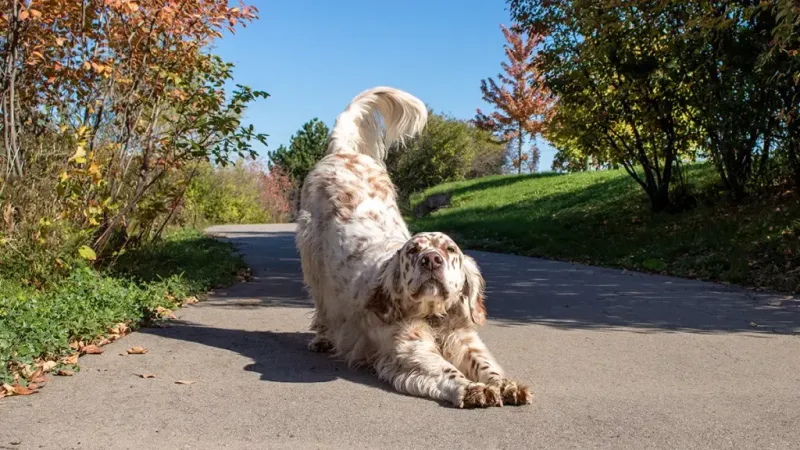
A dog’s body language speaks volumes. Ignoring signs of discomfort can lead to stress or aggression. It’s essential to recognize indicators like tail-tucking, excessive drooling, or cowering. Such cues suggest your dog might be anxious or overwhelmed. Intervening early prevents potential conflicts. Give your dog space or leave if necessary. Every dog deserves to feel comfortable during park visits. Understanding their signals ensures a positive experience. By acknowledging discomfort, owners can adjust situations to better suit their pet’s needs. This practice nurtures a supportive dog park atmosphere for all.
Using Retractable Leashes
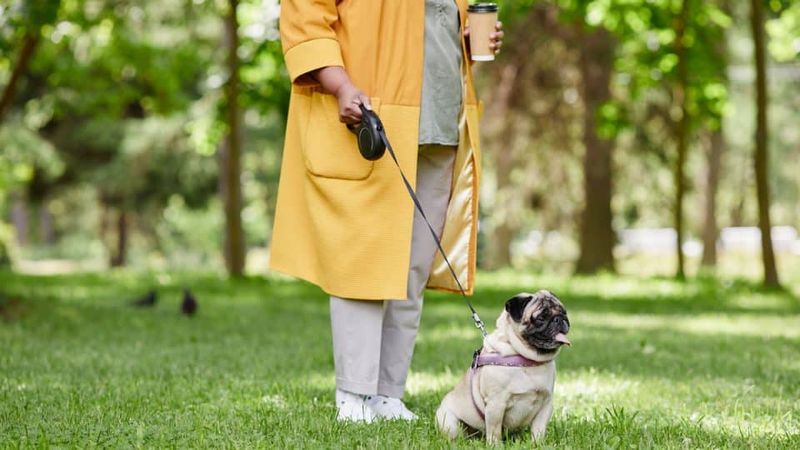
Retractable leashes, though convenient, can be a hazard in busy parks. They may extend too far, leading to tangled dogs or tripping hazards. Control becomes difficult, especially if a dog suddenly bolts. In close quarters, these leashes complicate social interactions. Opt for fixed-length leashes in crowded areas to maintain better control. This choice ensures safety for both dogs and owners. Managing your dog’s space prevents unexpected incidents, fostering a secure environment. Being mindful of leash types contributes to a harmonious park experience, where playtime is uninterrupted and enjoyable.
Bringing Toys to the Park

Bringing toys to a park can spark excitement and territorial disputes among dogs. Some dogs become possessive, leading to scuffles. It’s wise to assess the crowd before introducing toys. Not all dogs share well, and fights may break out over favorites. If you bring toys, ensure they’re communal and monitor interactions. Consider the dynamic, stepping in when necessary. By facilitating fair play, you prevent conflicts and maintain park harmony. Toys can be fun, but they require careful management. Ensuring positive experiences for all dogs enhances the community spirit.
Not Knowing Park Rules
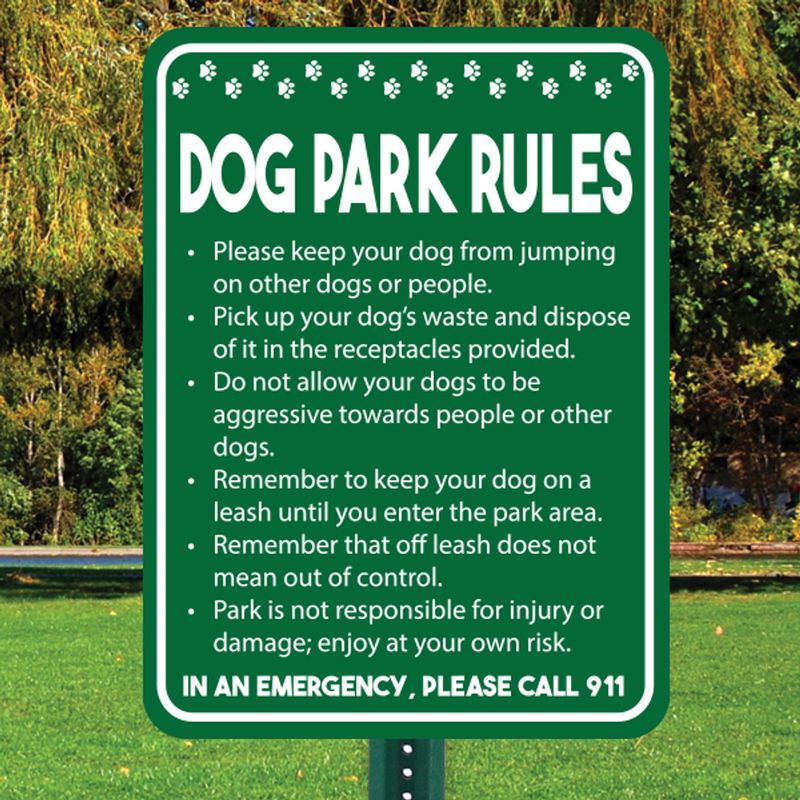
Every park has its set of rules, often posted at the entrance. Not familiarizing yourself with these can lead to unintentional breaches. Rules are there to ensure safety and enjoyment for all visitors. They might include leash regulations, hours of operation, or areas restricted for certain activities. By adhering to them, you show respect for the community and avoid misunderstandings. Take a moment to read and understand these guidelines. They’re the foundation for a peaceful and organized environment. Being informed contributes to a positive experience for everyone.
Allowing Jumping on People
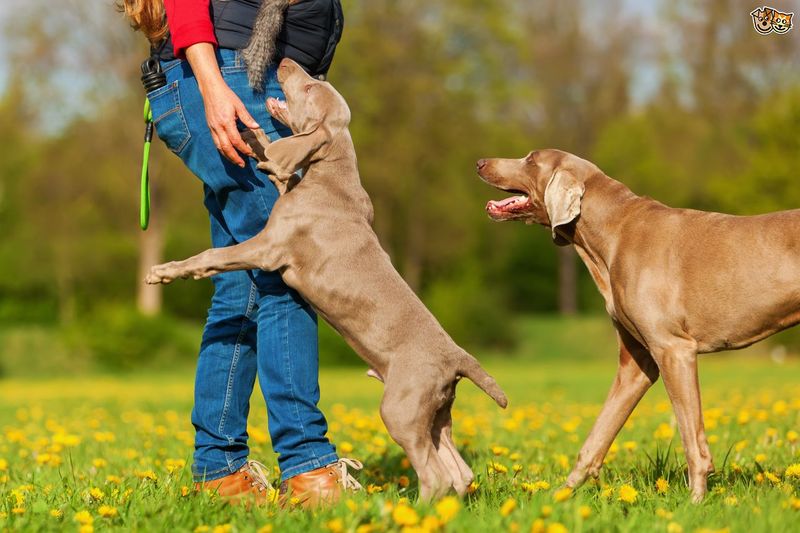
While some may find a jumping dog endearing, not everyone appreciates muddy paws. Encouraging such behavior can lead to discomfort or even injuries. Training your dog to greet politely ensures they respect personal space. A consistent approach, rewarding calm behavior, fosters better manners. Teaching boundaries contributes to a harmonious park atmosphere. Consider the perspective of the person being jumped on; it’s not always welcome. Reinforcing respectful greetings enhances social interactions, making visits pleasant for all involved. Polite dogs are a joy to be around, reflecting considerate ownership.
Not Intervening in Play Fights
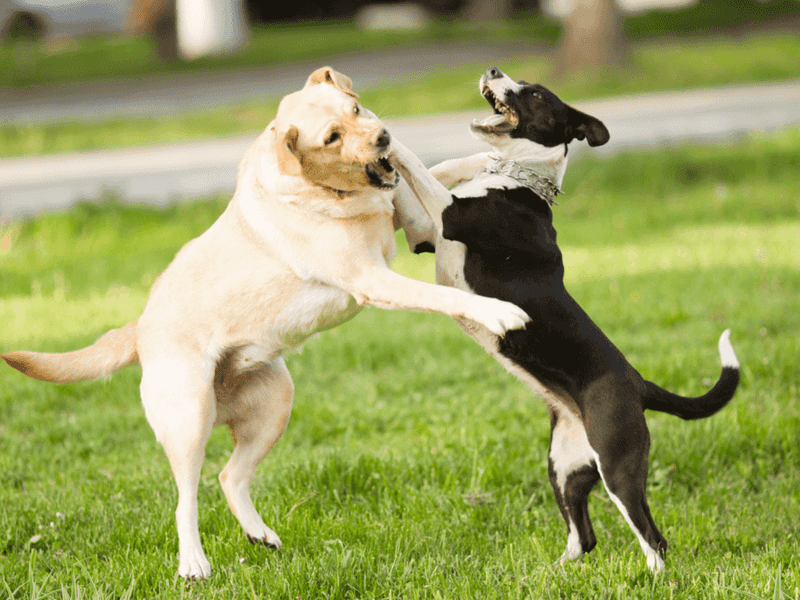
Play fighting is a normal, healthy part of canine interactions, but it requires supervision. Recognizing when play escalates into aggression is key. Look for signs like tense bodies or growling. Intervening ensures safety, preventing injuries or stress. Use positive distractions to guide dogs back to playful behavior. Owners should remain attentive, stepping in when necessary. By managing play fights, you maintain a joyful park environment. Dogs need boundaries to learn appropriate interactions. With mindful oversight, playtime remains fun and educative, fostering friendships rather than rivalries among park-goers.
Allowing Dogs to Dig
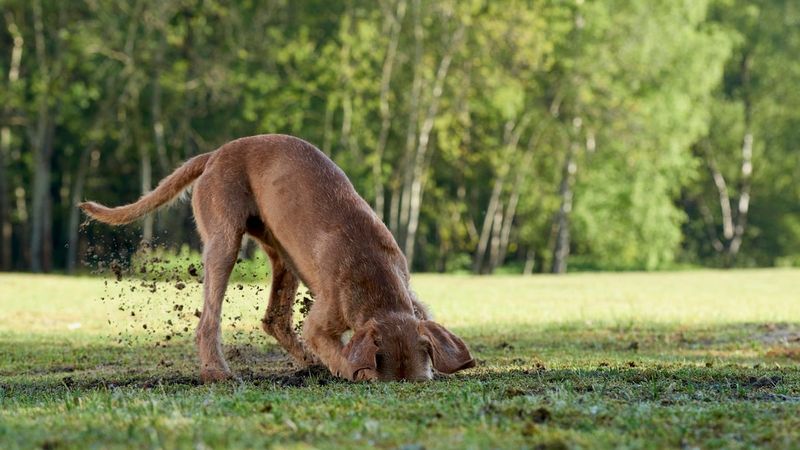
Digging comes naturally to many dogs, but in shared spaces, it can become a nuisance. Holes pose tripping hazards for dogs and people alike. It’s crucial to redirect this behavior to appropriate areas or activities. If your dog loves to dig, consider designated spaces or sandpits. Ensuring they don’t damage shared grounds shows respect for the park community. By curbing digging habits, you prevent accidents and maintain a tidy park. Responsible ownership involves guiding your dog’s instincts appropriately. A well-maintained park offers a safer, more pleasant experience for everyone.
Overcrowding Small Parks

Small parks can quickly become congested, especially during peak hours. Overcrowding leads to stress and limited play space. Consider visiting during quieter times or choosing alternative locations. It’s important to recognize when a park has reached capacity. Too many dogs in one area increases the risk of conflicts. By spreading visits, you contribute to a more relaxed environment. Being mindful of space ensures all dogs enjoy their time without feeling confined. A balanced number of visitors maintains harmony, allowing room for energetic play and socialization.

